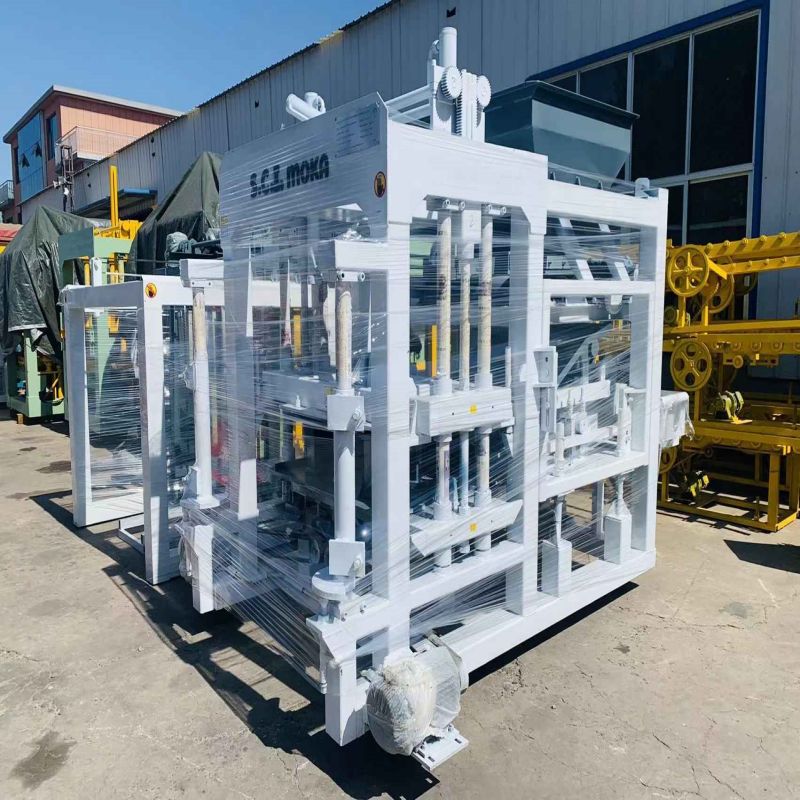
Image source:Aiweiblockmachine
Introduction
In recent years, the construction industry in Africa has experienced a significant transformation, driven by the adoption of innovative technologies and practices. Among these advancements, block machines have emerged as crucial tools in the construction landscape, revolutionizing the way buildings and infrastructure are erected across the continent. From bustling urban centers to remote rural communities, block machines play a pivotal role in shaping Africa’s built environment, offering sustainable solutions to pressing challenges such as housing shortages, infrastructure development, and economic empowerment.
Understanding Block Machines
At its core, a block machine is a mechanical device designed to produce construction blocks from various materials, most commonly concrete. These blocks serve as fundamental building units, used in a wide range of construction projects, including residential buildings, schools, hospitals, roads, and bridges. Block machines come in various types and sizes, ranging from small manual machines operated by hand to large automated systems capable of mass production.
Types of Blocks Produced
Block machines can manufacture different types of blocks, each tailored to specific construction needs and requirements. Concrete blocks, also known as hollow or solid blocks, are widely used for building walls, partitions, and foundations due to their strength and durability. Interlocking bricks, another popular product, feature a unique design that allows them to fit together like puzzle pieces, eliminating the need for mortar and enhancing structural stability. Paving blocks, on the other hand, are used to create driveways, walkways, and outdoor spaces, adding aesthetic appeal to urban environments.
Functions and Features
The primary function of a block machine is to mold raw materials into standardized blocks with precise dimensions and specifications. To achieve this, block machines incorporate various features and components, including molds, mixers, vibrators, and hydraulic systems. Molds determine the shape and size of the blocks, while mixers blend materials such as cement, sand, gravel, and water to form the block’s composition. Vibrators ensure proper compaction of the mixture within the mold, while hydraulic systems facilitate the release and stacking of finished blocks.
Usage and Applications
Block machines find widespread usage in diverse construction applications across Africa, catering to both formal and informal sectors of the economy. In urban areas, they are employed by commercial construction companies and government agencies to erect high-rise buildings, residential complexes, and infrastructure projects. In rural communities, smaller-scale block machines empower local entrepreneurs and artisans to produce building materials for housing and community development initiatives. Additionally, block machines play a crucial role in disaster relief efforts, providing rapid and cost-effective solutions for rebuilding communities affected by natural disasters.
Advantages of Block Machines
The adoption of block machines offers several advantages that contribute to their popularity and widespread use in Africa:
- Speed and Efficiency: Block machines can produce large quantities of blocks in a relatively short period, significantly accelerating the construction process compared to traditional methods.
- Cost-Effectiveness: By manufacturing blocks on-site, construction projects can reduce material procurement costs, transportation expenses, and reliance on skilled labor, making building more affordable and accessible to communities with limited resources.
- Quality and Consistency: Block machines ensure uniformity in block production, resulting in consistent dimensions, strength, and structural integrity, which are essential for building safe and durable structures.
- Versatility and Adaptability: Block machines can accommodate various raw materials and block designs, allowing for flexibility in construction projects and the customization of blocks to meet specific architectural and engineering requirements.
- Environmental Sustainability: Block machines promote sustainable construction practices by utilizing locally available materials, minimizing waste generation, and reducing carbon emissions associated with transporting pre-fabricated building materials.
Challenges and Opportunities
Despite their numerous benefits, block machines face several challenges that hinder their widespread adoption and impact in Africa:
- Access to Capital: The initial investment required to purchase and operate block machines can be prohibitive for small-scale entrepreneurs and local communities, limiting their ability to harness the technology for economic development.
- Technical Expertise: Operating and maintaining block machines require specialized knowledge and skills, which may be lacking in certain regions, particularly in rural areas with limited access to training and education.
- Infrastructure Constraints: Inadequate infrastructure, such as unreliable power supply and poor transportation networks, can disrupt block machine operations and increase production costs, undermining their efficiency and viability.
- Market Demand and Competition: Fluctuations in construction activity and competition from imported building materials pose challenges for local block manufacturers, affecting their profitability and sustainability in the marketplace.
- Environmental Impact: While block machines offer environmental benefits compared to traditional construction methods, their operation still consumes energy and resources, raising concerns about carbon emissions, land degradation, and waste management.
Addressing these challenges requires concerted efforts from stakeholders across government, industry, academia, and civil society to create an enabling environment for the sustainable growth and development of the block machine sector in Africa. Initiatives such as vocational training programs, microfinance schemes, infrastructure investments, and policy reforms can help unlock the full potential of block machines as catalysts for economic empowerment, job creation, and inclusive growth.
Conclusion
In conclusion, block machines represent a transformative technology that is reshaping the construction landscape in Africa, offering practical solutions to pressing challenges while unlocking new opportunities for innovation and development. By harnessing the power of block machines, African countries can build more resilient, sustainable, and inclusive societies, where every individual has access to safe, affordable, and dignified housing and infrastructure. As the continent continues its journey towards prosperity and progress, block machines will undoubtedly remain at the forefront of this transformative journey, paving the way for a brighter future for generations to come.
